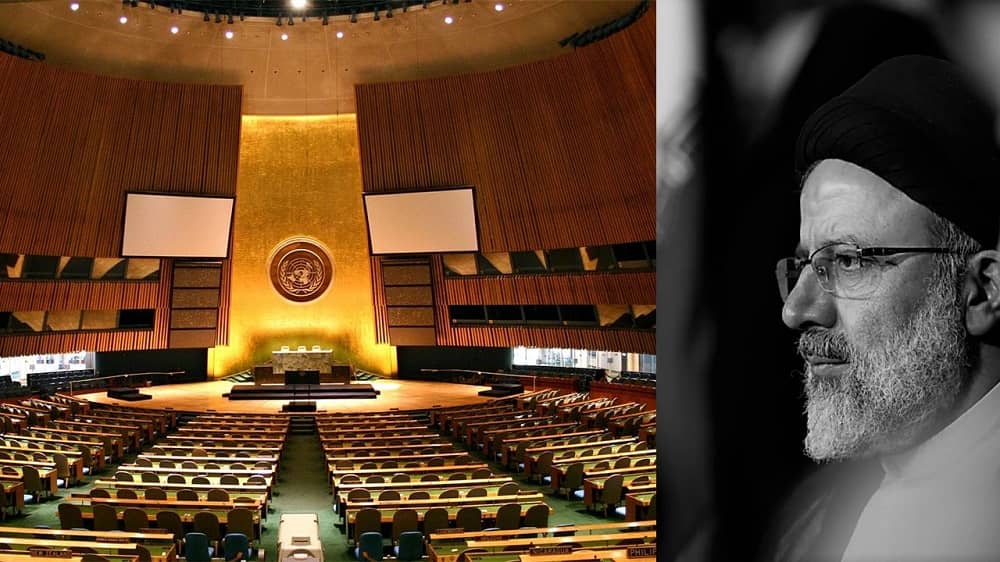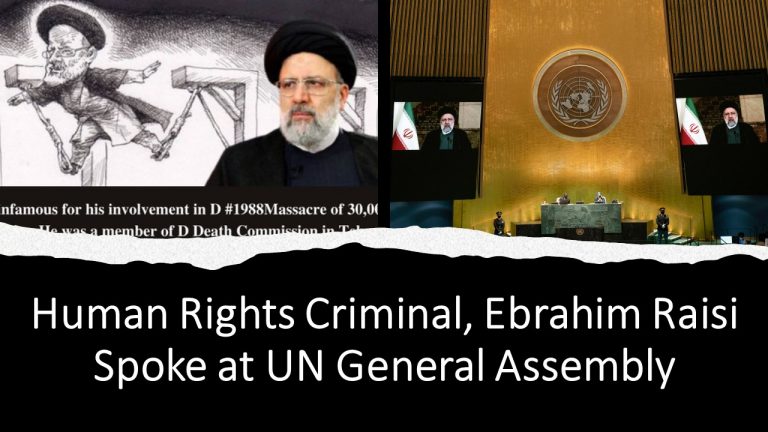
Ebrahim Raisi was allowed to speak at the UN General Assembly only five days after Amini’s death.
When addressing the United Nations General Assembly, Iran’s regime president Ebrahim Raisi only made a passing reference to the country’s ongoing protests. Even then, he did so solely to cast aspersions on his Western adversaries and imply that they were exploiting an incident that was still “being investigated.” Those remarks came just a few days after Raisi suggested in an interview with CBS News that investigations were also needed to determine whether or not the Holocaust occurred. That says something about the importance of investigating Iran’s theocratic regime.
Last week, Iran’s “morality police” arrested a young woman named Mahsa Amini for allegedly wearing her mandatory head covering too loosely. She was taken to the hospital shortly after her arrest after falling into a coma, and she died three days later. Authorities attempted to prevent her family from viewing the body and urged them to bury her at night. However, eyewitnesses reported seeing her being physically beaten in the van that took her to be “convinced and educated.”
As shocking as these reports are, it is even more shocking that Ebrahim Raisi was not only allowed to speak at the UN General Assembly only five days after Amini’s death but also received the attention of fellow attendees. The delegates either demonstrated ignorance or disregard for Raisi’s involvement in the high-profile killing, his participation in the 1988 massacre, as well as his illegitimacy in the eyes of the vast majority of Iranians.

Iran’s protests highlight the importance of denying international legitimacy to the regime’s president Raisi.
Many protesters this week have been heard chanting “death to Raisi” as well as “death to the dictator,” with the latter referring to the regime’s Supreme Leader Ali Khamenei, who single-handedly appointed Raisi to the presidency. The dual slogans reflect a perception of Amini’s death as a result of the regime reinforcing its ultra-hardline ideology through the new administration. These initiatives have had a particularly negative impact on Iranian women, and an incident like the one last week was unavoidable after Raisi ordered the violent enforcement of the nation’s forced veiling laws by a much larger deployment of morality police.
The National Council of Resistance of Iran (NCRI) was quick to warn that Raisi’s appointment by the supreme leader was a sure sign of an increase in executions, tightening of restrictions on women’s rights, and an increase in the clerical regime’s usual malign activities. The NCRI worked tirelessly to have the UN withdraw Raisi’s invitation to the General Assembly and the US deny him the visa he needed to travel to New York. However, these efforts largely went unnoticed, and as a result, the international community found itself in the awkward position of giving the Iranian regime president an audience while thousands of Iranians chanted for his ouster and prosecution.
If the international community can effectively overlook Raisi’s prior involvement in the 1988 massacre, it’s difficult to imagine that just one more would be enough. However, Mahsa Amini’s death has lit a fire that has spread throughout much of Iranian society, and it is now poised to spark an even larger uprising in which the Iranian people will demand regime change and the establishment of a free, secular, democratic republic of Iran.

